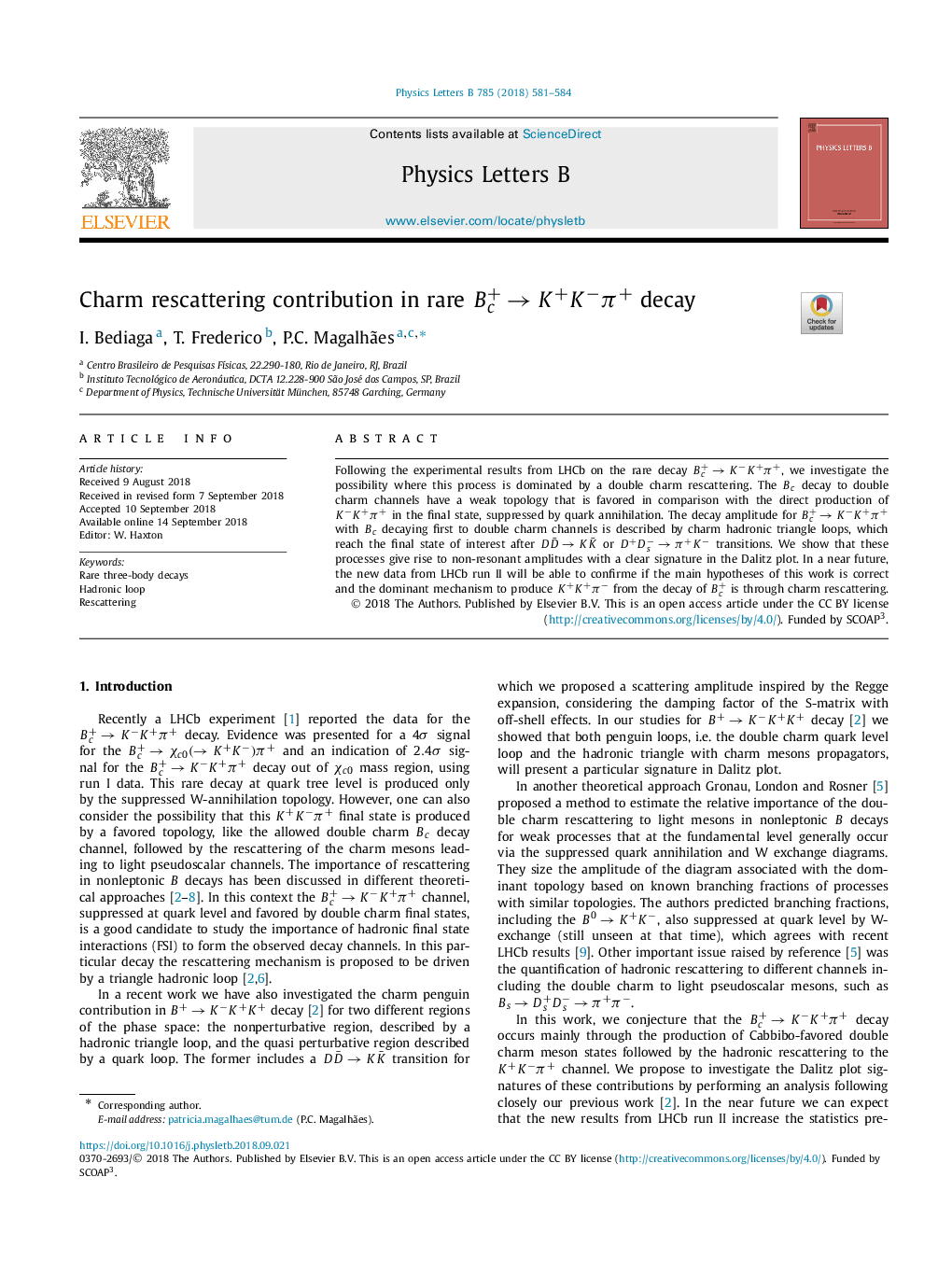| Article ID | Journal | Published Year | Pages | File Type |
|---|---|---|---|---|
| 10136740 | Physics Letters B | 2018 | 4 Pages |
Abstract
Following the experimental results from LHCb on the rare decay Bc+âKâK+Ï+, we investigate the possibility where this process is dominated by a double charm rescattering. The Bc decay to double charm channels have a weak topology that is favored in comparison with the direct production of KâK+Ï+ in the final state, suppressed by quark annihilation. The decay amplitude for Bc+âKâK+Ï+ with Bc decaying first to double charm channels is described by charm hadronic triangle loops, which reach the final state of interest after DD¯âKK¯ or D+DsââÏ+Kâ transitions. We show that these processes give rise to non-resonant amplitudes with a clear signature in the Dalitz plot. In a near future, the new data from LHCb run II will be able to confirme if the main hypotheses of this work is correct and the dominant mechanism to produce K+K+Ïâ from the decay of Bc+ is through charm rescattering.
Keywords
Related Topics
Physical Sciences and Engineering
Physics and Astronomy
Nuclear and High Energy Physics
Authors
I. Bediaga, T. Frederico, P.C. Magalhães,
